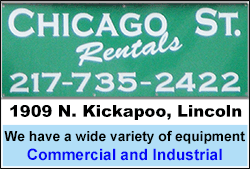|
 If you’re handy around the house, it is never wrong to have the
right tools! Having the correct tools can mean the difference
between having to find and pay someone else to do the work, and do
it in their own time and in their own way, vs. doing the job right
the first time yourself. If you’re handy around the house, it is never wrong to have the
right tools! Having the correct tools can mean the difference
between having to find and pay someone else to do the work, and do
it in their own time and in their own way, vs. doing the job right
the first time yourself.
Having the right tools can enhance your skill set. Together, with
the vast and varied amount of information readily available at your
fingertips today via the internet, there are few jobs you can’t
tackle yourself if you have the right tools.
Having the right tool for the job is accomplished by obeying these
three rules. Get these right and you will be set no matter what the
challenge.
1. Buy
the best quality tool for the job that you can afford at the time
Tools can be exceedingly cheap or they can be exceedingly expensive.
The cheapest tools may not even be fit for, or survive, the initial
job for which they are purchased. They are generally throw-away
tools that you dispose of after the task has been accomplished, if
they last that long. Most places that sell tools, whether they are
hand tools or power tools will have several different lines of tools
available next to each other on display.

Principle 1: Poor grade tools are generally the lowest priced
tools in the display. They are made of the least durable materials
and although they may resemble good tools in some ways, they are
poor knock-offs. Don’t buy the lowest priced tools because they will
usually lack quality and durability.
Principle 2: Some reputable companies may have different
grades of tools in their own brand name. It is common for a
brand-name company to attempt to encourage you to buy their line of
tools by having several tiers of tool quality available to you. They
will present you with their lowest (poorest) quality tools at low
prices, and present you with a mid-quality line of tools for a
moderate price, and may even present you with a contractor grade
tool choice for yet a higher price. Don’t be confused by brand
names. Even though a reputable company presents low priced tools it
does not necessarily mean they are good quality tools.
Principle 3: Tool retailers that do not have a wide diversity
of tools to select from may not be the best place to purchase tools.
You want to be able to compare tools and select the quality tool you
desire from the widest selection available, meaning that the
Wal-Mart or grocery store selection of tools may not be right for
you except in an extreme emergency.
The principle to be followed is that, like wealth, you accumulate
tools over a lifetime and over a lifetime you become tool-wealthy.
Buy the best tools you can afford every time you shop for a tool, so
that when your tool collection begins to grow it is populated with
tools that lasted through the first job and are ready to go for all
the upcoming jobs in your future.
Good quality tools used right should last a lifetime.
2.
Tools that you cannot find are like not having tools at all!
You have tools in the trunk of your car, tools in your garage, tools
in the junk drawer in the kitchen, tools in your workshop and some
tools who-knows-where. You remember buying them, buy have no idea
where they are when you need them most.
Having good tools requires organizing and storing your tools so that
you can locate them quickly when that next job comes up.


Principle 1: Tools that you cannot find are no good to you.
You know that you bought them and you can even remember when you
last used them, but you can’t put your hand on them. Those are
worthless tools. And they became useless because you did not take
the time to organize and store them so you can find them the next
time.
Principle 2: You should spend as much time cleaning,
maintaining and putting your tools away as you did using them. Your
tools should be in their unique storage spaces (even if the storage
system is known only to you) in a condition to pickup and use again
immediately. It will hinder the job if you have to hunt for the tool
and if you have to clean it up before you use it again.
Principle 3: Although it is more difficult to maintain,
having tools in different places like your trunk and garage and
workshop is doable if their placement in those locations makes sense
in context rather than merely ending up where you used them last.
[to top of second column] |

The most important thing here is that good organization can save you
time, money and frustration if you develop a system for the storage
of your good tools and follow it every time you use a tool. Put away
properly, your tool can be there like a good friend for you next
time you need it. Put away haphazardly, you may ultimately end up
buying duplicate tools, wasting time and money.
3.
Lending tools to your friends and neighbors will result in broken
and unreturned tools!
Our next door neighbors growing up were among our best friends we
had in this life. We shared everything with them, including our
tools. When we wanted to use our hammer we knew right where it was:
at our next door neighbor’s house. We could visit it there any time.
Not meaning to sound like a tool-Scrooge here, I recommend that the
next time anyone asks if they can borrow your framing nail gun, you
just say NO. If they ask to borrow your pipe wrenches, you just say
NO. If they ask to borrow your drill press, your table saw, your
staple gun, your battery-driven circular saw, hammer drill, or any
other tool in your collection, you just say NO. You are not being
mean. You bought those tools for your own use to save hundreds, if
not thousands of dollars over a lifetime in home repairs, and if
your neighbor has your tools, you don’t.
Principle 1: Your neighbors will likely follow the principle
of delaying the return of your tools so they can forget whose tools
they are. I’m not calling them thieves; this is just the way it
normally goes. The longer they reside at your neighbor’s house the
more likely they are to change ownership and become your neighbor’s
tools.
Principle 2: Your friend or neighbor didn’t buy the tool in
the first place, didn’t read the owner’s manual, and likely doesn’t
know that you shouldn’t twist the handle on the recip saw as they
are sawing through the branch on their cypress tree and therefore
didn’t realize that such a maneuver would snap off the blade and the
shaft of the saw, thereby rendering it worthless. Borrowed tools are
much more likely broken by the persons borrowing them than by the
persons owning them.

Principle 3: Even in the most perfect situation with the best
intentioned friends or neighbors, if your tool is in their
possession it is not in your possession. And given the odds, if they
have your tool you will likely need it.
Principle 4: It doesn’t matter how well you label your tools
or inscribe your name, address, telephone number and SSN# on your
tools, the moment they leave your possession their identification is
moot. Possession is 9/10’s. “Hey, that tool has Joe’s name on it. Is
it Joe’s tool?” “Naw, he gave it to me years ago.” The label does
not ever guarantee return.
Do not loan out your tools! They are like your treasure. You don’t
just loan out the family jewels. You keep them organized and locked
up and you know where they are for the next time you need to use
them. So it is with your expensive tools.
So, buy the best tools you can afford every time you buy a new tool.
It usually pays to read consumer reports or reviews before you buy
them. Take your time. The most important thing is that you get a
tool that will do the job and last to do the jobs over the next 30
years. Buy tools that you can leave to your children or your
grandchildren.
Second, organize your tools so that you can put your hand on it the
next time you need it without cleaning the garage or your entire
workshop. And finally, never, never, never loan out your expensive
tools. Maybe go to the dollar store and buy some of those faux tools
to loan to your friends and neighbors as a courtesy, but don’t let
them even see your nail gun collection.
|